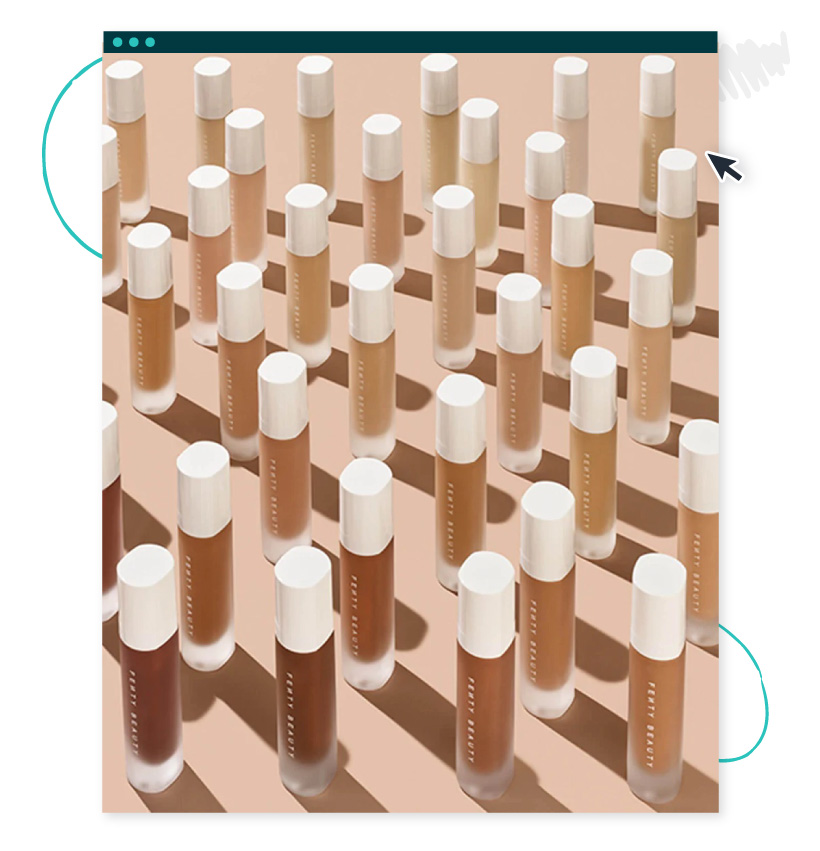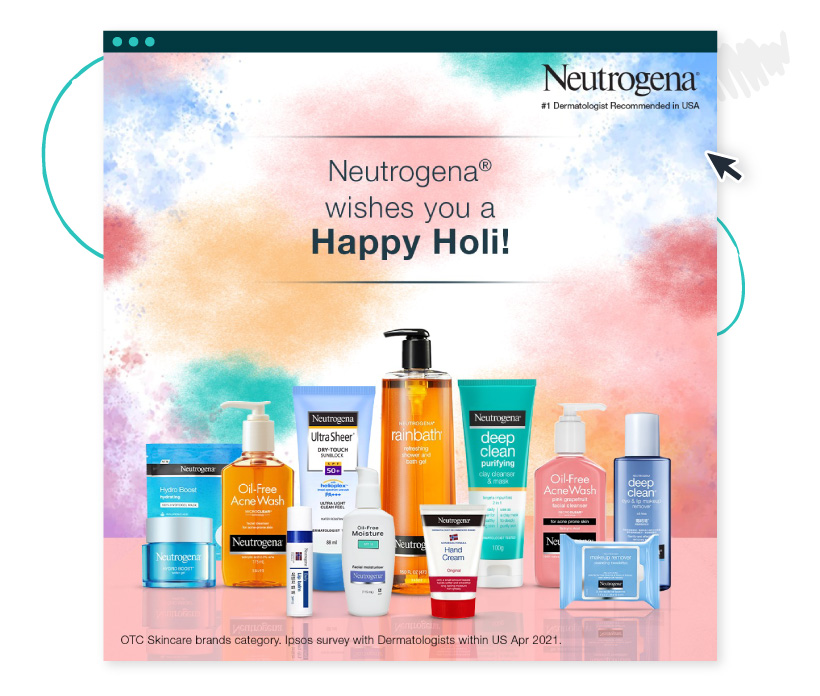No matter where you are in your content creation and marketing journey, chances are you know what it takes to craft content that converts customers from curious to committed when it comes to your brand.
But in light of continued changes in society, from the personal to the political, content creators and marketers are increasingly called upon to produce content that is intentionally inclusive. And while the goal of inclusivity — and with it, accessibility, diversity, and equity — is commendable, what it actually means to create inclusive content can be confusing, if not downright elusive, to even the most seasoned content marketers.
Here’s the tea on inclusivity: Brands sometimes struggle with establishing inclusive content and design standards because to do so in a way that is authentic, meaningful, and effective requires doing the work of actually being (or at the very least, working towards becoming) inclusive, equitable, and diverse in ways that do more than tick boxes off a checklist.
What is inclusive content?
Before tackling what it means to create inclusive content, let’s look at what inclusion is, how it can be expressed in products and services, and also learn about a few closely related concepts that are crucial to the success of your quest for content inclusivity.
Authors Boyuan Gao and Jahan Mantin of Project Inkblot, a collective of designers, writers, and other creatives dedicated to designing for racial equity, included the following definitions in their online guide to creating products and services that are diverse, equitable, and inclusive:
- Diversity is quantitative. It’s the composition of different people represented in what you make, and the decision-makers on your team.
- Inclusion speaks to the quality of the experience you’ve designed for these diverse folks, so they experience themselves as leaders and decision-makers.
- Equity lives in how we design our systems and processes; the way we work, and who we work with, so we are upholding our commitment to diversity and inclusion.
- Misrepresented communities are communities that have been defined by dominant culture, denied the ability to define themselves on their own terms, and are therefore falsely or narrowly represented. We use this instead of “underrepresented” or “marginalized,” because those identifiers again center the POV of dominant culture.
As you’ll soon see, understanding these concepts and how they work together will provide you with a strong foundation for creating inclusive brand experiences with content.
Inclusive content principles
If your lived experiences are more mainstream and less like those who exist in misrepresented communities, approaching inclusivity with tact and sensitivity can be intimidating. This is due to the myriad variables such as ethnicity, race, nationality, gender, and appearance (to name just a few) that must be considered before you get started.
With those variables in mind, here are a few guiding principles to help you in the pursuit of creating content with an inclusive mindset:
People come first
While this may seem obvious, the team of content creators at Intuit responsible for creating the brand’s inclusive style guide listed it as their number one principle: “We put people first and choose words that are inclusive and respectful.”
Chuck the checkboxes
Creating inclusive experiences isn’t a box you tick off on a DEI checklist of things you should do (or things you should not do). That approach suggests that inclusivity is a task — a chore, even — to be taken care of, and it is the antithesis of what inclusive content aims to do: to genuinely recognize and value the existence of all individuals.
Inclusivity is not one and done
Codifying inclusivity as a principle in your brand’s style guide or similar documentation will go a long way to ensure that the commitment to building inclusive experiences remains a priority for your client or brand.
How to create inclusive content
The essence and importance of creating inclusive content are found in doing the work. It starts with taking up the mantle of inclusivity as a brand priority, and continues with the discoveries you make along the way.
This includes how some of the words and phrases that are woven into our lexicon are rooted in oppression, and it is expressed in using conscious language that intentionally considers the diverse cultures that are representative of our ever-changing society.
Following are some tactical methods you can use in pursuit of creating inclusive content, along with a few examples of what those methods look like in action. Use these tips to create inclusive social content, web copy, and blog posts.
Gather inclusive insights
If your brand or team isn’t as diverse or inclusive as the customers you wish to attract, let your marketing research help guide you to discovering who isn’t at the table — those who might be unintentionally left out or excluded. You may not have the ability or resources to change the makeup of your team, but you can still do the work to understand your customers — both existing and potential — by seeking diverse points of view that can be used to inform your inclusive content strategies.
This can be a game-changer around when developing inclusive holiday marketing, for example, where it’s important to strike a balance between neutrality and religious or cultural differences in a way that avoids alienation and appropriation.
Image source: Coca-colacompany.com
While not necessarily holiday-centric, Coca-Cola’s groundbreaking 1971 commercial, “I’d Like to Buy the World a Coke,” features a diverse group of 65 young people standing atop a hill intoning the importance of peace and harmony. The ad, which generated over 100K letters from consumers (the 1970s equivalent of going viral), is considered by many to be one of the earliest examples of diverse and inclusive marketing.
Peruse your personas
Unless it’s appropriate for your brand, don’t get locked into creating content for a singular audience or a narrow set of marketing personas. Go beyond and ask who might be missing from those personas and consider who might be unintentionally excluded from the content and experiences you’re creating, and by extension, excluded from your brand.
A great example of this principle in action is Fenty Beauty’s approach to inclusivity. Created by singer and fashionista Robyn Rihanna Fenty, this makeup line was created in part “so that people everywhere would be included.”
While it’s true that inclusivity is central to the mission of the brand, Fenty Beauty (and the complementary Fenty Skin) delivers inclusive experiences through the use of content that continually demonstrates a commitment to that mission.
Image Source: Fentybeauty.com
Where Fenty Beauty and Fenty Skin push the boundaries of inclusion as it relates to race, gender, and related attributes, brand mate Savage X Fenty unabashedly features lingerie “for every mood, every vibe and every BODY.”
Savage X Fenty also makes no secret that inclusivity is a priority. The brand has been lauded for using social media as a way to engage and empower its target market and has been recognized for being a leader in shifting the culture by not only recognizing but representing diversity among ethnicities, body shapes and sizes, and gender.
Appreciate don’t appropriate
Sometimes brands jump on the inclusivity bandwagon with the best of intentions but end up falling prey to trying to sound “hip” or relatable, whether visually or via voice and tone. Though your efforts may be genuine, they may also be taken the wrong way, and may not resonate with your target audience the way you intended.
Consultant and DEI analyst PK Sundar explains the differences between appreciation and appropriation this way:
“Appreciation happens when the desire to understand and celebrate cultures and specific facets of that culture, or individuals connected to it, is the driving force for referencing or using aspects of a culture. Appropriation, on the other hand, occurs when brands adopt facets of culture without understanding their importance.”
Image source: Facebook.com/Neutrogena
You could argue that connecting makeup wipes with Holi, a festival that originated in India as a celebration of spring is a veiled attempt at inclusivity that borders on appropriation, and you could be right.
However, mainstream beauty brand Neutrogena made a decent attempt at blending the traditional roots of the festival with modern-day adaptations seen at 5K races and fun runs. At the same time, they made the brand relevant to solve a common problem: how to remove the rainbow of multi-hued powders (and makeup) after a day of celebration, or you know, just a regular day at the (virtual) office.
Content as an inclusivity superpower
“Creating inclusive content sends the message that the brand cares about all its consumers equally. Making content accessible also boosts brands’ ranking with the search engines.” — Topic Insights
Ideally, inclusion is a principle that is actively pursued and upheld at the highest levels of brand leadership, and content creators are empowered to fully implement inclusivity in a way that is foundational to their content marketing strategies. Then, and only then, is a brand truly ready to begin the task of designing experiences that are inclusive and welcoming to all.
At this point, you might be thinking that establishing inclusivity as a guiding principle is a daunting mission for a content marketer to take on.
You’re not wrong.
But consider this: As a content creator, the ability to use content to shift brand culture and impact inclusivity is your unique superpower. That’s because, in addition to being foundational to bringing customer experiences to life, content is also central to establishing and articulating brand voice and tone.
Because of that, you’re in the best possible position to lead the charge in the pursuit of inclusivity, driving change with the approach you take and the language you use to craft your marketing messages across a variety of content channels.
Questions to ask before creating inclusive content
Here’s another way to think about the importance of inclusive content: if customers cannot see themselves in the experiences you’re creating, then they’re not going to engage with your brand. And that can cost you revenue.
Fear not! You can use your content creation superpowers for good by crafting content that incorporates conscious inclusion as part of your content marketing strategies and acknowledges the uniqueness and individuality of each person who engages with your brand, product, or services.
Karen Yin, the creator of the Conscious Style Guide, suggests asking yourself these questions as you set out to create content that engages and empowers a more inclusive and diverse customer base:
- Who is my audience?
- What tone and level of formality do I want?
- What am I trying to achieve?
- How might history change the impact of my language choices regardless of my intentions?
- Who’s being excluded?
The ultimate goal of inclusive content is to ensure that all people have equal access to your brand, product, and services. Crafting language that removes barriers to that access isn’t just a smart business strategy — it’s also the ethical thing to do.









